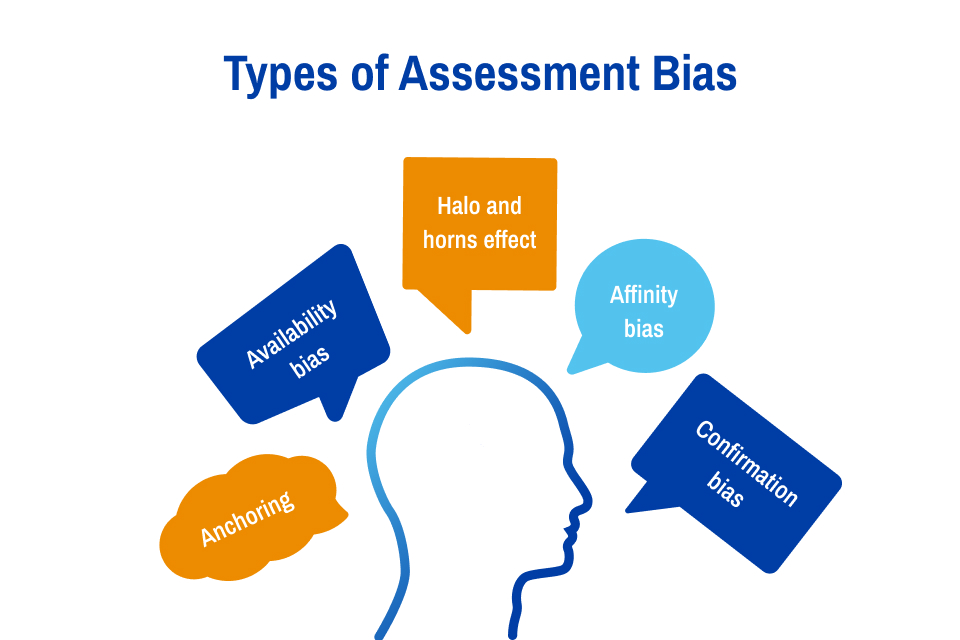Reducing Bias in Trainee Assessment
Humans process enormous amounts of information per second, which is too much for us to intentionally process every single item. That is why we unintentionally process the vast majority of information using our intuition and instinct, known as System 1 processing. We deliberately process only a limited portion of information through our rational thinking, known as System 2 processing. When we process using intuition and instinct, we utilize our brain “shortcut” where implicit bias can play a role.
Certainly, educators attempt to be fair and objective when assessing trainees, but it is actually harder than we think, in part due to our implicit bias. Implicit bias refers to attitudes that affect our decisions in an unconscious manner. Our own biases can play a role in how we assess our trainees. As educators play a vital role in assessing trainee progress, it is vital that we understand potential negative consequences resulting from bias in trainee assessment, and how we can mitigate this bias.
Negative Consequences Resulting from Bias in Assessment
Bias in assessment can negatively affect trainees in a variety of ways. Female residents are more likely to receive lower levels in all the Accreditation Council for Graduate Medical Education (ACGME) milestones, and fewer positive narrative assessment comments, compared to male residents. Female and under-represented minority students are more likely to receive comments about their personal attributes rather than competency-related behaviors in clerkship assessments, compared with their male and non-URM counterparts, respectively. Black and Asian medical students were less likely to be members of the Alpha Omega Alpha honor society compared to white students. These negative consequences stemming from unfair assessment can seriously diminish motivation and impede career success. Fair and unbiased assessment is essential to ensure competency, provide equal opportunities, and encourage respect for all learners regardless of their individual characteristics. These negative consequences stemming from unfair assessment can hinder both motivation and career success.
Types of Bias in Assessment and Mitigation Strategies
Understanding that we all have implicit bias is an excellent first step towards personal growth and fairness. Once educators recognize they have biases, they can employ individual approaches to diminish them. A good start is to practice mindfulness, slow down decision-making time, and adopt different perspectives. While there are many types of bias related to the assessment of trainees, five common types and strategies educators can use to mitigate them include:
- Availability Bias: Refers to our tendency to rely on recent and emotional information to make decisions. In summative assessment, we tend to weigh more heavily something the trainee recently did or something that elicited strong emotions. To reduce availability bias, take notes throughout a clinical rotation to assess students more fairly by avoiding weighing only recent and emotional information.
- Halo and Horns Effect: The halo effect indicates a cognitive bias that causes an assessor’s perception of a trainee to be unduly influenced by a single positive trait. This tends to benefit more privileged and physically attractive trainees, and their negative qualities may then be overlooked. In contrast, the horns effect can lead to an assessor’s perception of a trainee being unduly influenced by a negative trait, which can marginalize trainees who have less privilege or may have less traditionally attractive physical characteristics. Their positive qualities such as emotional intelligence, creativity, or leadership may be overlooked. To reduce the halo and horns effect, create standardized and objective assessment rubrics and provide training to educators so that they can objectively assess trainees by avoiding the assessment being overly influenced by any single trait.
- Anchoring: Refers to relying heavily on the first piece of information we receive. Educators may form the first impression on their trainees, and then subsequent improvements to performance may be overlooked. To reduce the anchoring effect, slow down your thought process and allow yourself to make more mindful decision making. For instance, you might take a moment to reflect on a trainees’ aggregate performance prior to completing an assessment.
- Confirmation Bias: Refers to the inherent inclination to notice, focus on, and assign more credibility to information that aligns with our existing beliefs. Educators may believe that a trainee excels in clinical practice if the trainee graduated from prestigious institution, even though that does not necessarily reflect clinical competency. To reduce confirmation bias, ask yourself prompting questions to explore viewpoints that are different from your existing beliefs.
- Affinity Bias: Refers to our tendency to favor trainees who share similar interests, backgrounds, and experiences with us. If we have learners who have the same gender identity or share our racial or ethnic background, we may tend to favor them compared to their peers. To reduce affinity bias, employ group decision-making and blinding, thus mitigating individual assessor bias.

In summary, fair assessment in medical education is paramount. It strives towards more equitable trainee assessment and supports professional inclusion and future career success. Furthermore, unbiased assessment can support a more inclusive clinical learning environment, where diversity is valued, and all trainees feel respected and supported regardless of their personal traits.
About the Author

Kento Sonoda, M.D., is assistant professor of Family and Community Medicine at SSM Health and the Saint Louis University School of Medicine. Sonoda is a fellow of the American Society of Addiction Medicine and is an American Academy of HIV Medicine Expert. Sonoda's areas of professional interest include learner assessment, addiction medicine and HIV. Sonoda can be found on Twitter or LinkedIn or contacted via email.